Popular types of begonias
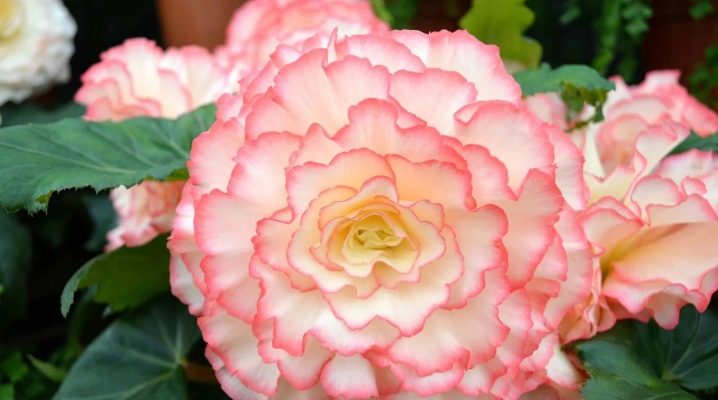
Begonia is one of the most popular and widespread plants that thrive in indoor conditions. Often it is found not only in city apartments and private houses, but also in educational institutions, clinics and other similar organizations. Begonia fits perfectly into different ensembles, effectively decorating even the most boring and austere interior. Many growers are engaged in the cultivation of this charming plant. Today we will take a closer look at what varieties of it exist and what characteristics they differ in.
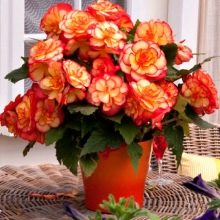
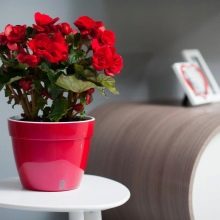
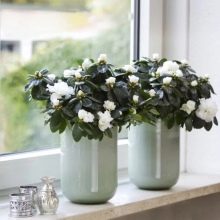
Peculiarities
Begonia is one of the most common plants and is difficult to confuse with other similar species. Many flower growers are engaged in its cultivation, since begonia itself is unpretentious and does not require complex care for itself - there is no need to spend a lot of time and effort on it.
This beautiful and non-capricious plant is both annual and perennial. Often, the bushes reach a height of more than 2 m. The flowers themselves, in this case, most often have a modest size and are not striking. If we are talking about a special root begonia, then, on the contrary, it does not become too large - usually in growth it does not exceed the mark of 20 cm.
Many of the feng shui fans are sure that begonia, being at home, destroys negative energy and helps to smooth out conflict situations. In addition, it is believed that this common plant cleanses the biofield of household members living in the house where it grows. A person's self-confidence increases markedly if he grows begonia.
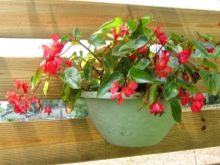
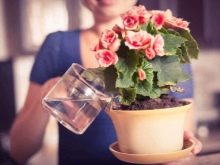
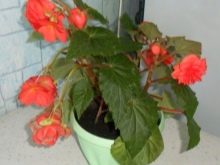
There are many different types and varieties of begonias. Each copy has its own distinctive features and characteristics, which are very important to take into account if you plan to grow this unpretentious plant. Despite the fact that it does not require special attention, it cannot be left without proper care. Due to the huge number of different types of begonias, an average description of this plant as a whole simply does not exist. In addition, this beautiful flower is subdivided into both decorative flowering and rhizome-like, as well as many other subspecies.
The root system of begonia develops very well, thanks to which this plant is perfectly adapted to living quarters.
It grows well on the street. The roots are tuberous, branched or fibrous.

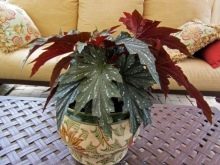
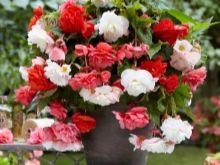
Classification
As mentioned above, there are many different types and varieties of begonias. Each species has its own distinctive features and characteristics concerning not only its appearance, but also the direct care that it requires. If you are planning to start growing this beautiful flower, then you definitely need to know which subspecies and varieties it belongs to, otherwise you can make a serious mistake in caring for it.
First of all, you should consider all the parameters by which this plant is classified. According to the direct method of application in floriculture and decorative qualities, the following varieties are distinguished:
- decorative and flowering, intended for keeping in the garden;
- decorative and flowering, designed for growing in indoor conditions;
- decorative deciduous indoor.
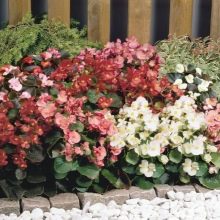
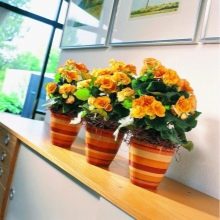

Begonias are also divided directly according to the main characteristics of the rhizomes. The following categories are distinguished here:
- rhizome;
- tuberous;
- with a surface type root system (such plants have characteristic fibrous roots that are difficult to confuse with other options).
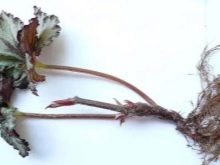
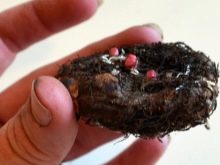
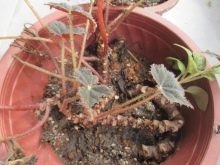
The nature of growth, as well as the characteristics of begonia shoots, is another important criterion that divides this plant into several variations:
- bushy - in this type, the shoots usually stand upright, are bamboo or reed-like;
- lodging - the shoots of these plants are usually rhizome and dense, lie on the soil;
- drooping - thin and flexible shoots of a creeping variety.
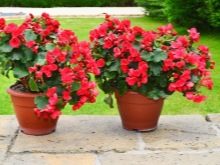
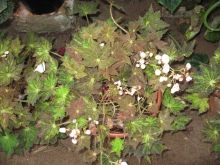
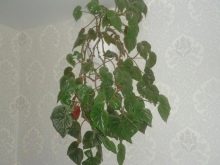
There is also a special classification of begonias according to V.V. Vorontsov - Doctor of Agricultural Sciences. This includes the following plant subspecies:
- tuberous;
- shrub;
- beautifully flowering, having large and very showy flowers;
- decorative deciduous, characterized by bright foliage.
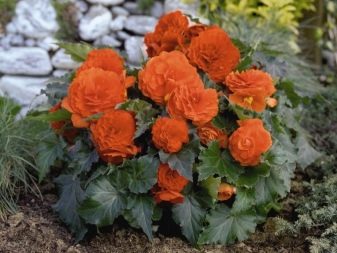
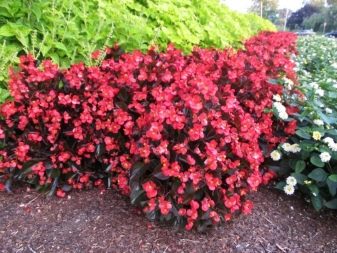
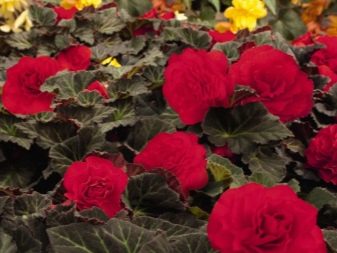
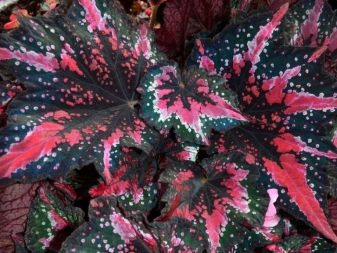
Based on the presence of a stem, as well as its external data, the following types of begonias are distinguished:
- bush;
- tuberous;
- leafy.
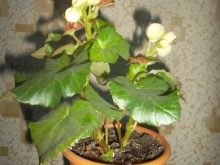
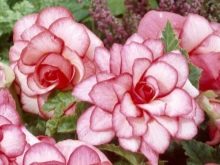
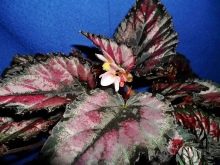
There are also some of the more popular indoor begonias.
- Indoor begonia. The specified flower is from the Begoniev family. There are over 2000 hybrids. A distinctive feature of this plant is its bright flowers.

- Anita. The plant of this variety has a brownish-green foliage. There are many small scarlet flowers forming one delicate red cloud. The plant is very fond of high humidity and grows especially actively in winter.
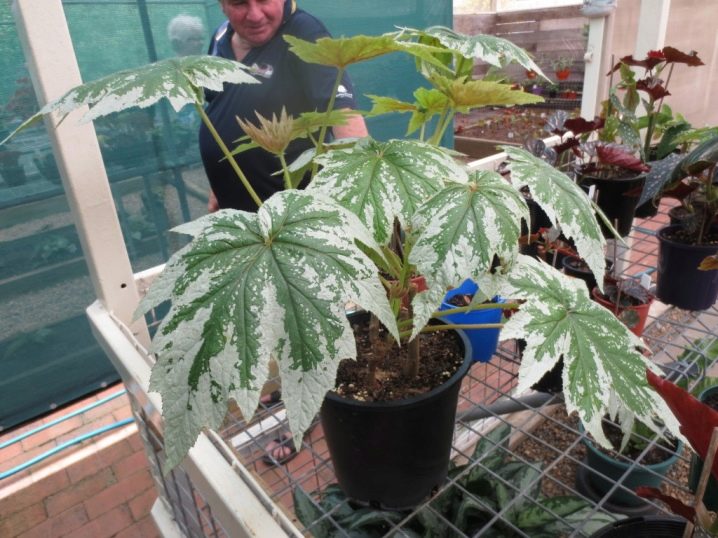
- "Baladin". It is a plant that has a lot of society with Anita. It has lush greenery and small flowers, rich in color. "Baladin" grows if the temperature is not lower than +20 degrees.
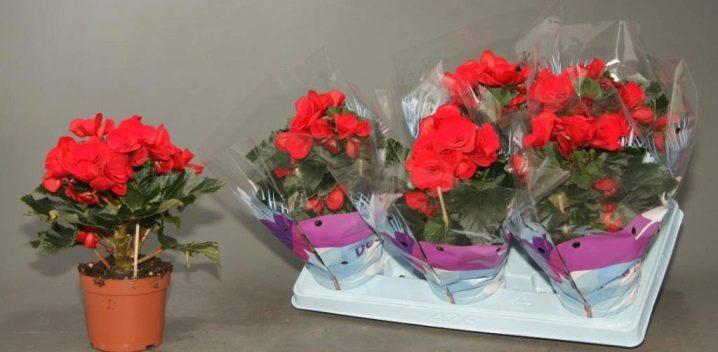
- Collar or cuff begonia. This is one of the most beautiful plants of the described species. Its stem is creeping, the leaves are colored light green, slightly lowered at the edges. A distinctive feature of collared specimens is bright red growths on the veins at the bottom of the leaf plates.
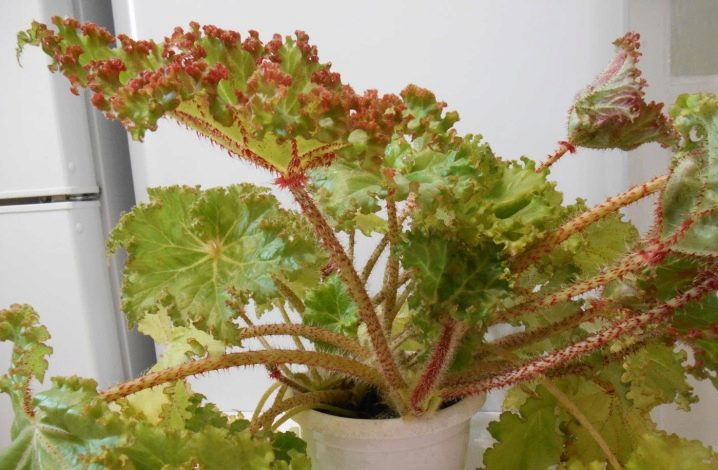
- "Cleopatra" is wedge-shaped. This representative of begonias is ideal not only for simple city apartments, but also for office premises.
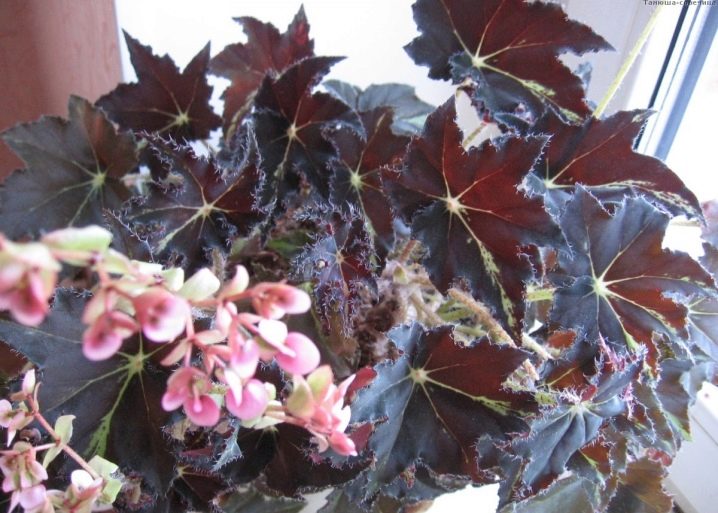
Knowing the main classification of this popular and unpretentious plant, it is worth moving on to a more detailed acquaintance with its equally attractive and widespread varieties.
Decorative deciduous
So, a beautiful plant belonging to the "metal" variety belongs to the type of decorative begonias. This flower is characterized by not very large leaves with a slightly velvety surface, pleasant to touch. The color of the foliage is usually muted green and the shape is oval. At the edges, the leaves are supplemented with cloves, and on their top there is a coating similar to metal - hence the name of this popular variety.
Maculata spotted
Maculata spotted is a bright representative of decorative leafy begonias. It is not very convenient to grow them on the windowsill, because they grow tall. Maculata grows in the form of a dark bush. The shape of the leaf blades is similar to the heart.
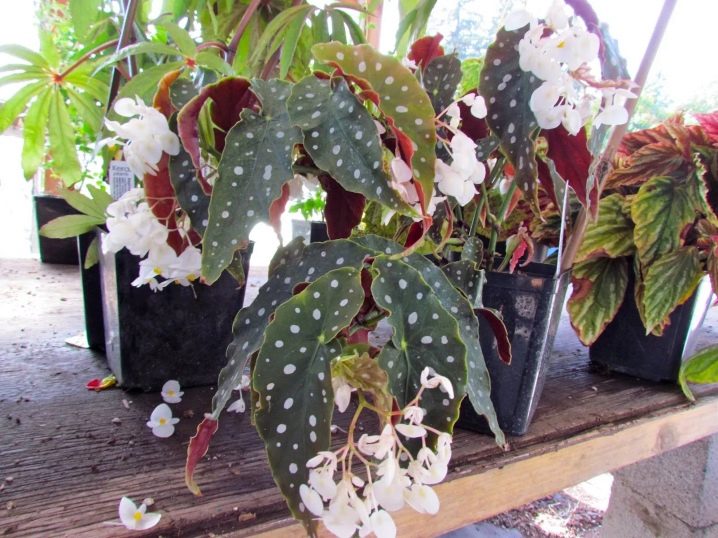
Tiger
Also, the Bauer begonia or the Tiger variety is an ornamental leafy species. This interesting plant also has one more name "Velvet". It is a not very large bush, the height of which can vary from 30 to 35 cm. The leaves of the Tiger begonia are painted in a delicate green color. Their shape is very similar to small hearts. Also on the surface of the foliage there are characteristic pictorial patterned elements, which have a darker shade, making them more noticeable.
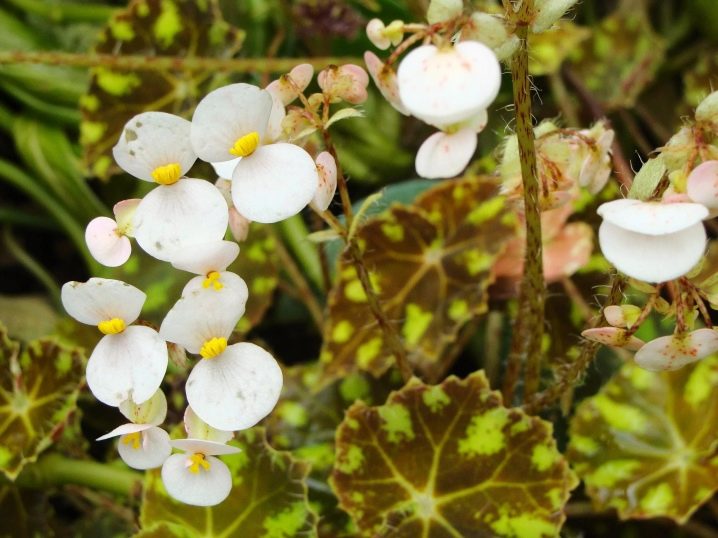
Begonia Manson
Many growers love to grow attractive Manson begonias. This plant also belongs to the decorative-deciduous variety and is distinguished by large greens. The leaves usually have noticeable contrasting patterns made in the form of a Maltese cross. It is this parameter that distinguishes Manson's flowers from other existing varieties - it is very difficult to confuse it with similar plants.The foliage can be medium to large in size. Often, the leaves reach 20 cm in length.The inflorescences are small and neat. Their color is usually lighter and more delicate.
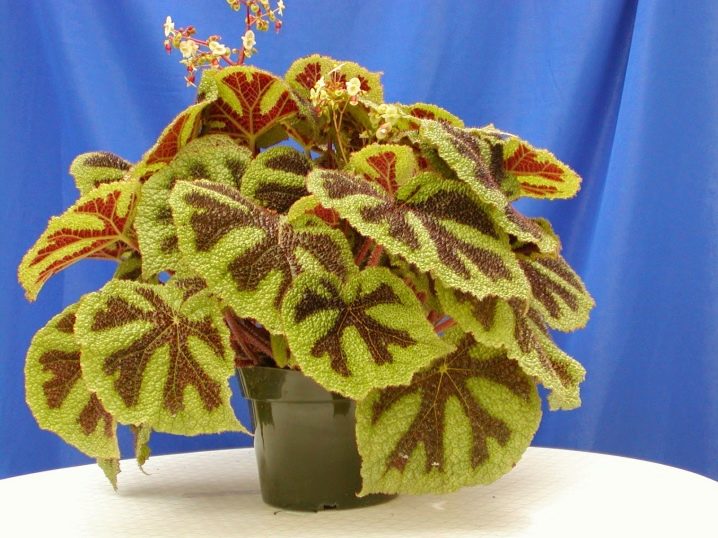
From Fist
The charming Fista begonia is no less popular. This attractive flower has not too long, but dense and strong stems. The leaves are usually distinguished by a shiny surface and a round shape. In the summer season, Fista pleases flower growers with small pink flowers.
This plant is completely undemanding to care for. Even an inexperienced florist who has never done anything like this can cope with its cultivation.
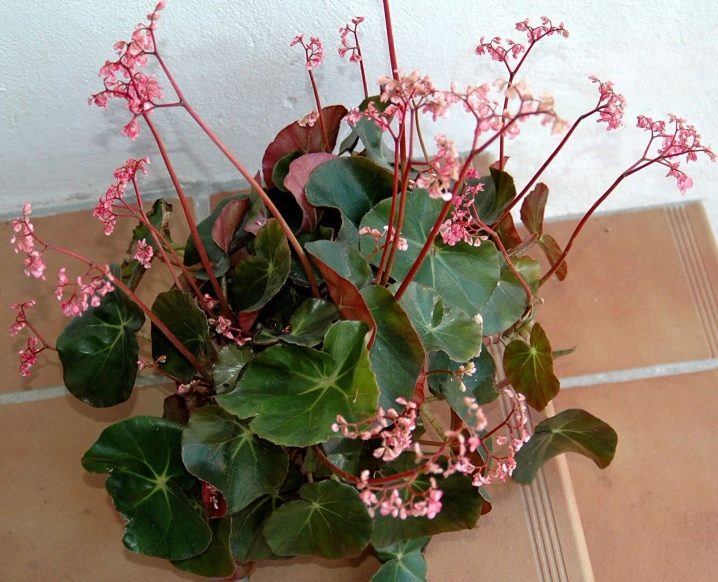
Variety from Kredner
The spectacular Kredner begonia is distinguished by its large size. This luxurious plant has characteristic drooping leaves, characterized by an unusual pink-green color. As for the size of the foliage, they grow large and fleshy. Begonia blooms between March and October.
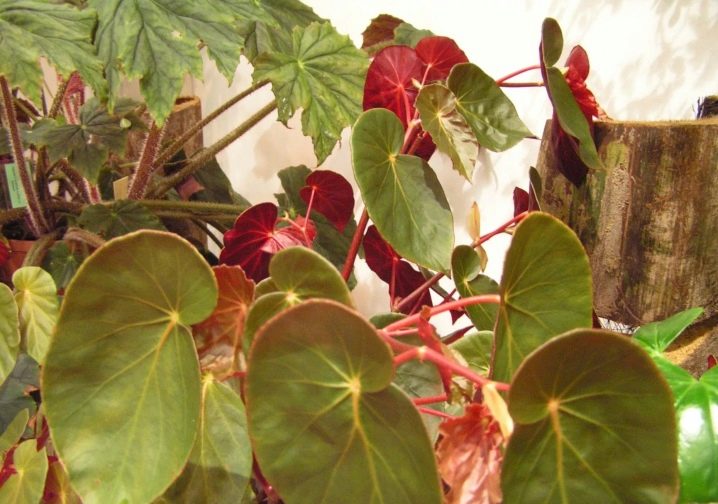
Hogweed
There is another well-known variety of decorative deciduous begonia - hogweed. Plants belonging to this category are compact in size and bushy structure. The stems of the specified begonia usually grow lodging and vigorous. The leaves of the described begonia are carved, palmate.
As a tapeworm plant, hogweed begonia is ideal.
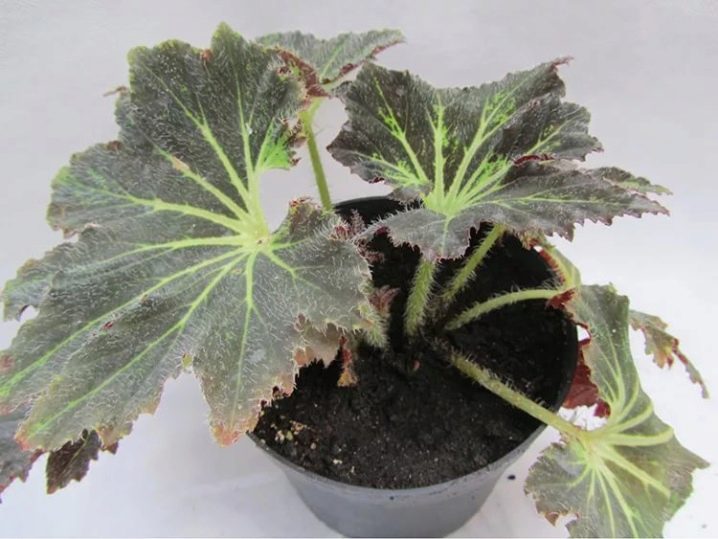
Palomar prince
The unique begonia Palomar Prince deserves a special mention. It is very simple to distinguish it from other existing varieties - just look at the leaves. The foliage of the plant has a spiral structure and a copper-green color. Light pinkish flowers bloom in winter. Such begonia is grown very easily and simply - special knowledge and rich experience in growing flowers will not be needed here.
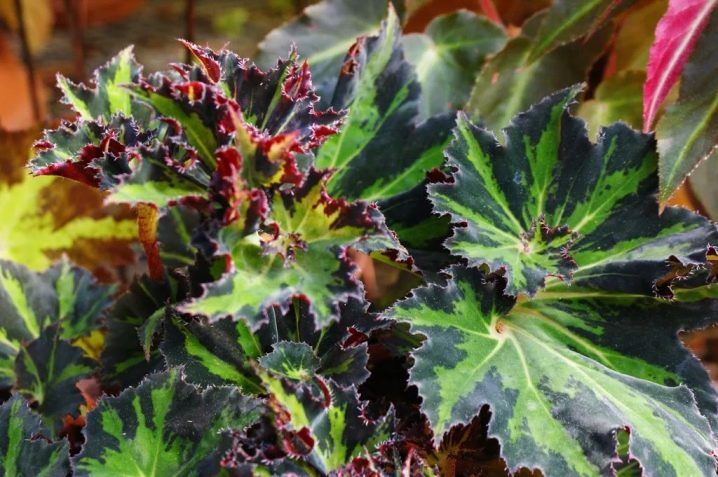
Charlotte chiffon
Charlotte Chiffon begonia is distinguished by its spectacular beautiful leaves. The foliage of the plant has silvery-nacreous leaf blades, in the central part of which there is a noticeable speck of a purple-pinkish hue. At the edges, the leaf blade is characterized by a wavy shape and a rich pink border.
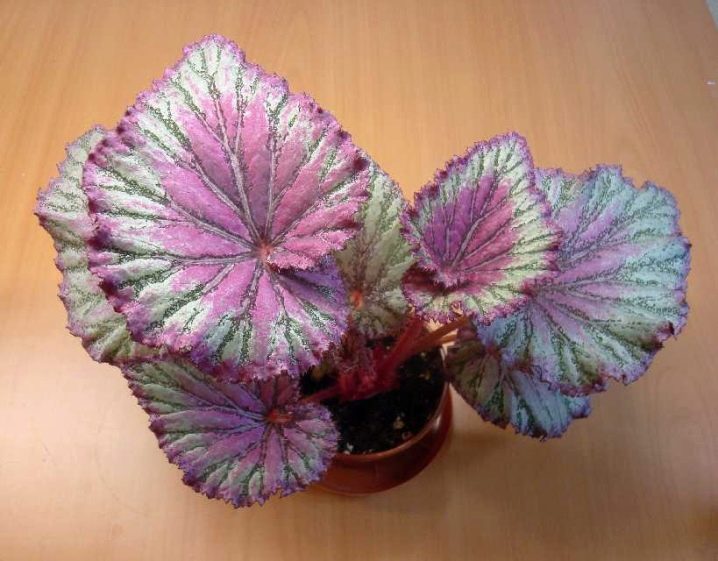
Green gold
Green Gold also has wide leaves. In this case, the foliage by nature twists, as if in a spiral. The color of a large-flowered plant itself is usually close to silver-blue shades. There is a brown edging on the foliage. This attractive plant acquires its modest size due to the shortened petioles of the leaves.
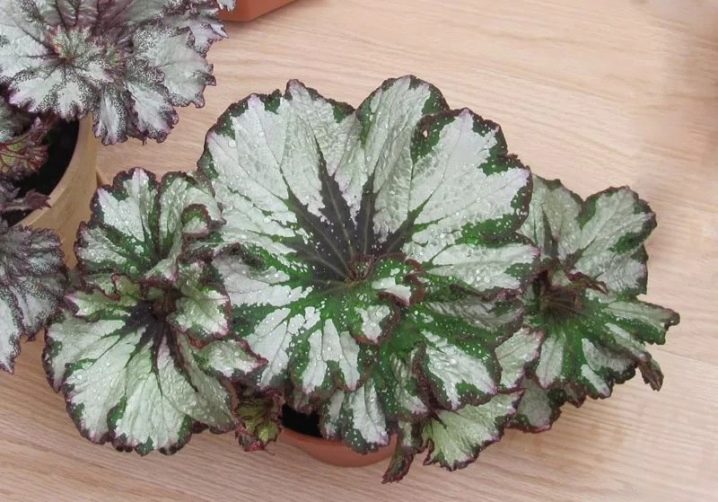
"Black Prince"
The flower of the "Black Prince" variety looks noble. A distinctive feature of this plant are leaves with a velvety surface and a non-standard shape. However, the shade of their flowers is not too bright.
The color of the leaf blades is dark green, close to black. It is by this color that the "Black Prince" is recognized.
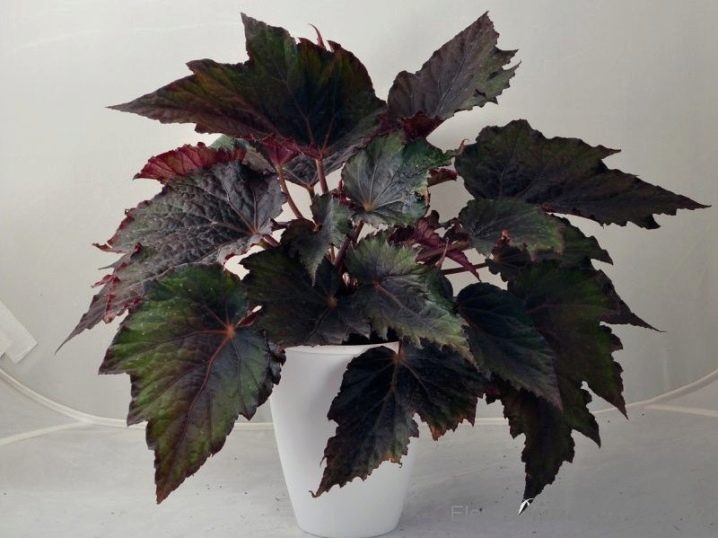
Ornamental-growing
A separate species is decorative growing begonias. These also include several interesting varieties that are grown by many growers.
"Senator"
For example, the plant of the "Senator" variety belongs to the class of ever-flowering ones. It is not at all demanding in matters of care. With the help of such a begonia, you can effectively decorate a flower bed in the yard, if you wish. Annual flowers usually have lush and eye-catching greenery by nature. Inflorescences are often small in size and rich in color.

"Fortune"
Begonia of the "Fortuna" variety looks very attractive and original. Such an interesting plant is distinguished by rich double inflorescences that have a variety of colors. Peduncles here are usually short, but very strong.
It should be borne in mind that the flowering period for this variety begins much earlier than that of other similar specimens.

Fimbriata Pink
The elegant begonia of the Fimbriata Pink variety is recognized as the favorite of many flower growers. It is a tuberous fringed flower with very large pink, yellow, yellow-red, orange and flowers of other "live" shades.As a rule, these "green pets" attract a lot of attention due to the playfulness of the colors. The flowering of such begonia begins in July.
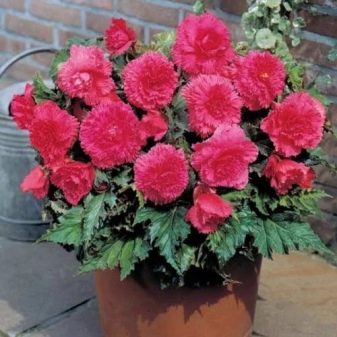
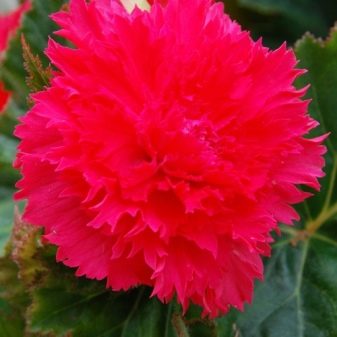
"Venus"
There is one more beautiful begonia - ampelous "Venus". This plant is also unpretentious. It has rich semi-double flowers. The greens are usually rich and picturesque.
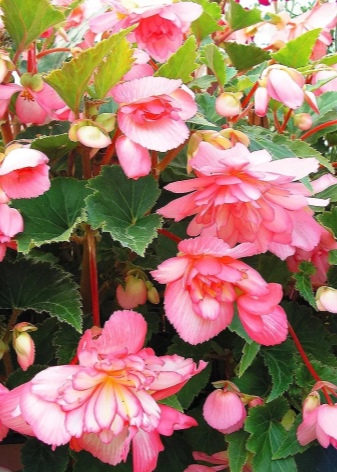
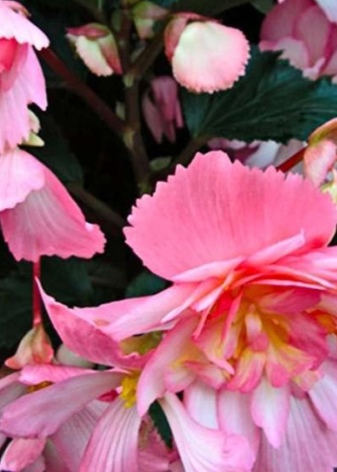
"Grandiflora"
Begonia "Grandiflora" is a tuberous variety, the flowers of which can reach 15-20 cm in diameter. Despite the large inflorescences, the dimensions of the begonias of this variety are recognized as more modest. Outwardly, the flowers of this plant are in many ways similar to charming roses, but their colors can be represented by a large number of different shades. Begonia flowers "Grandiflora" can grow both ordinary and double.

Apricot
A flower of Apricot or Epricot variety is distinguished by continuous flowering. These plants are distinguished by tenderness, but very attractive and solid inflorescences. The latter can be white, red, yellow or pink in color. On the petals of the described beauty, as a rule, there is a characteristic pinkish edging.
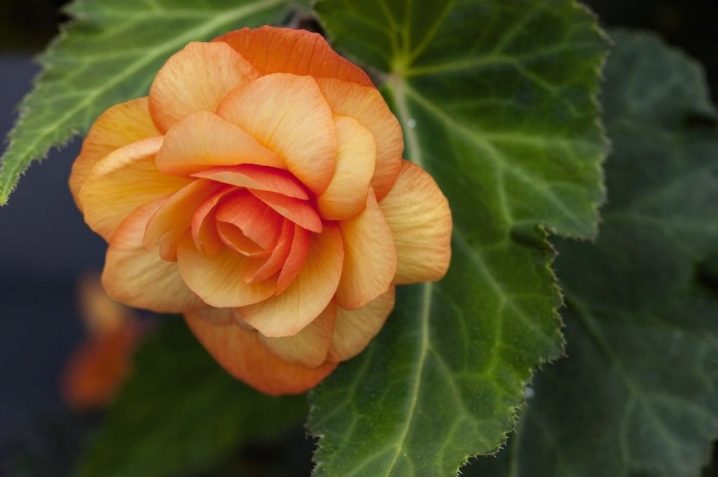
Non-Stop
Non-Stop begonia is considered a not too tall annual. This flower is characterized by rich and numerous large inflorescences. The leaves of this begonia have a very bright green color. The flowering period takes the entire summer season.
In conditions of temperature above +18 degrees, flowering is continuous.
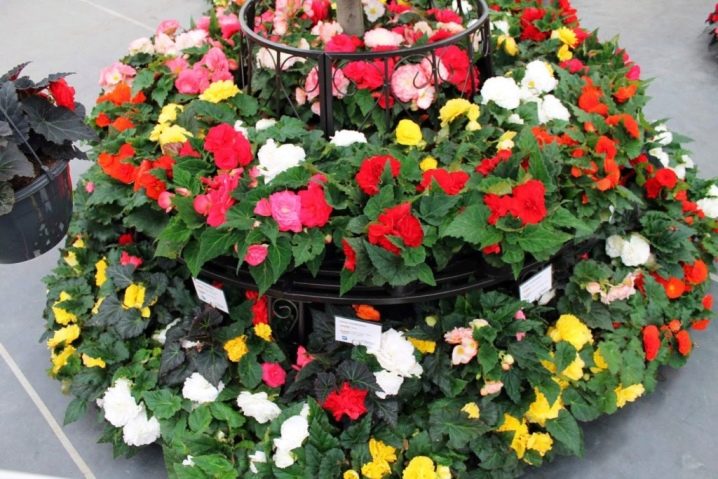
Marmorata
An interesting begonia "Marmorata" is also a perennial shrub. It is kept not only in room conditions, but is often used to complement harmonious landscape design. The height of the described bushes can reach 30 cm. The period of its flowering begins in July.
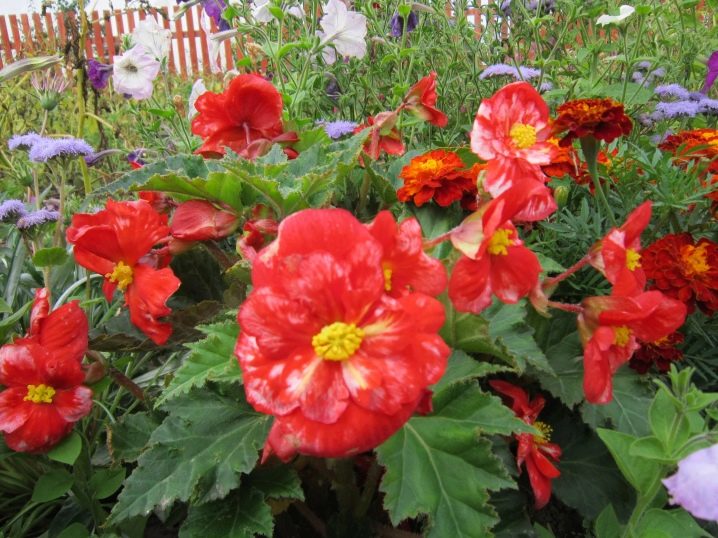
Terry
Terry orange begonia is distinguished by its "rich" and colorful flowers. With the help of this plant, you can effectively decorate a variety of interiors. In addition, this variety is ideal for complementing garden plots.
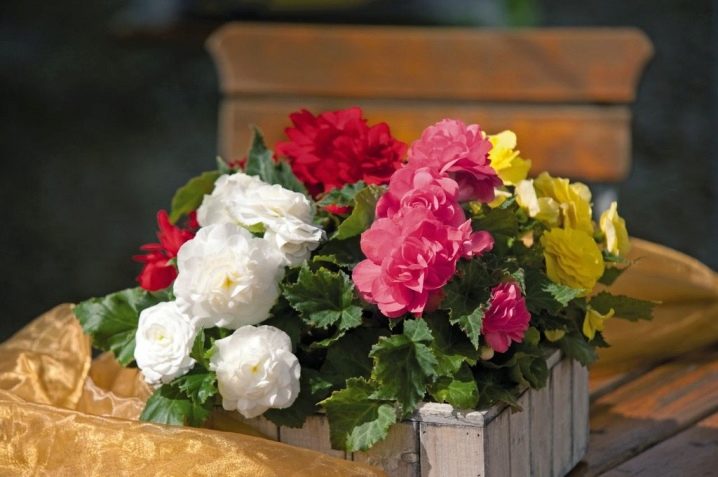
"Mix"
It is customary to include the unique Lame begonia among modern terry varieties. The expressive variety of flowers can surprise you with a very original look of "Mix".
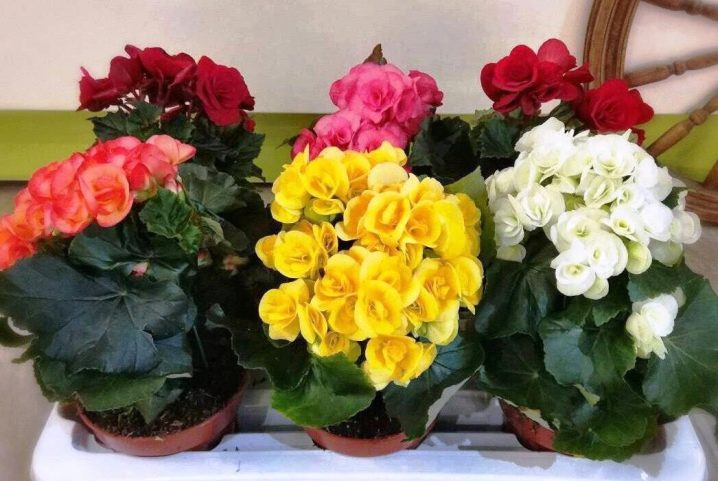
Double white
The beautiful Double White begonia has large snow-white flowers. The foliage of this plant has a characteristic dark green tint. In height, the flower usually does not reach more than 30 cm.
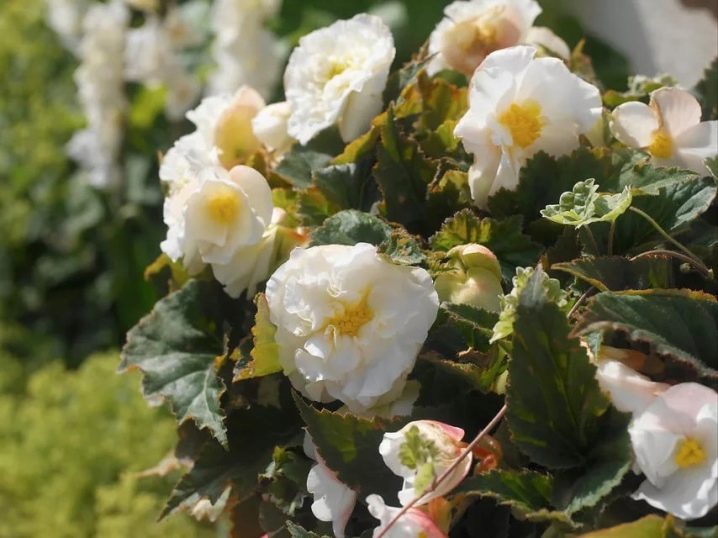
"Elatior Borisas"
The flower of the cultivar with the memorable name "Elatior Borisas" is eternally flowering. Such a plant can grow up to half a meter. Its leaves have a glossy and smooth surface. The edges of the foliage grow speckled. The flowers themselves here can be either ordinary or double. Their color is varied.
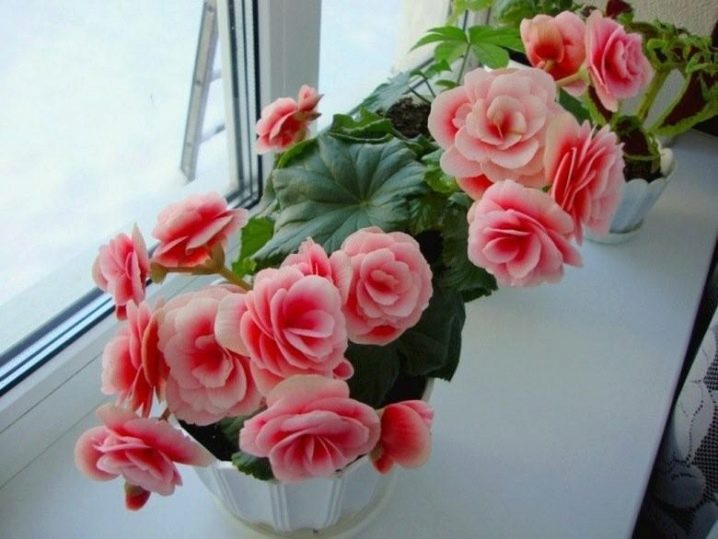
Bada boom
A not very large attractive bush is the begonia of the Bada Boom variety. Its greenery has an unusual bronze tint. The flowers are most often distinguished by a simple white color, but there are also pink and deep red varieties. This variety is blossoming many times earlier than others like it. That is why seeds need to be sown for seedlings in January-February. Landing is required to be done in open land, when there is confidence that frosts will not return anymore.
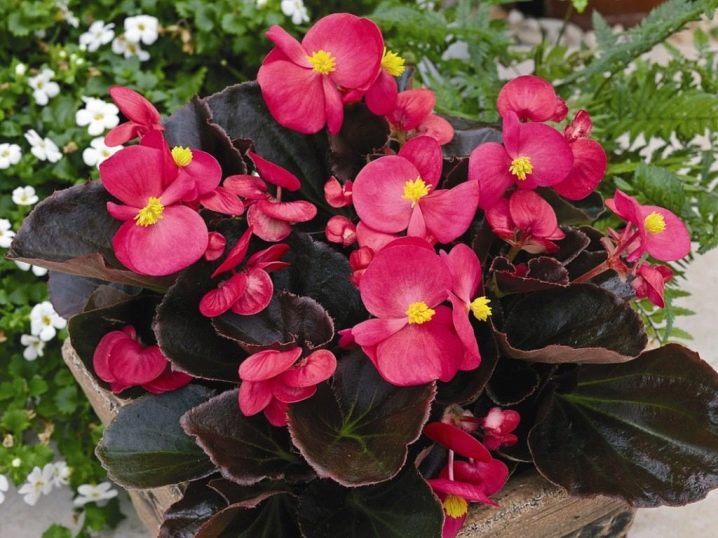
Picotee
Plants of the Picotee variety do not grow very tall. By itself, the bush turns out to be spreading. Its leaves are serrated. Flowers bloom double with an attractive border on the edges of the leaf blades.
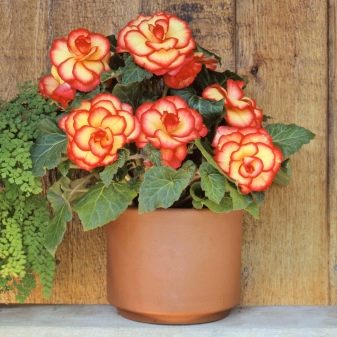
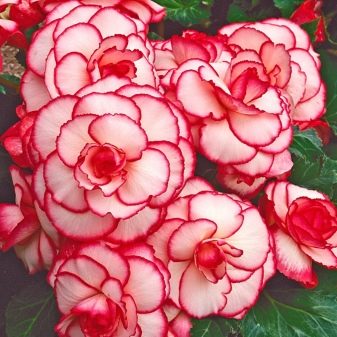
Crispa Marginata
The yellow-red color has a flower of the Crispa Marginata cultivar. The leaf blade of the indicated flower has a grassy hue and a purple border, and the flowers grow yellow with a scarlet border. In height, this plant does not go beyond the 20 cm mark. Like other varieties of begonias, the plant feels best in the company of diffused sunlight.
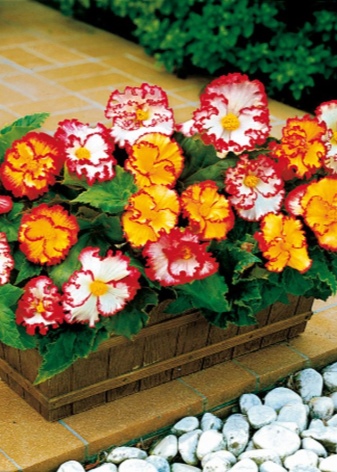
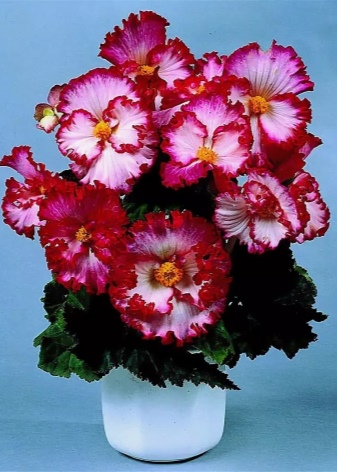
Marble
Marble begonia also grows small. The inflorescences here are terry. Their color is close to pink-red, and the greenery grows carved.Experts advise planting the tubers of this plant at the very beginning of February, preferably in a lighter soil, when the frost will definitely not return. This begonia will delight with its flowering from May to September.

Sadovaya
There is also a garden begonia. It adapts charmingly both in indoor conditions and in the garden. The flowers of this species are like tiny roses. The time of their flowering is set aside for the early spring of the flesh before frost.
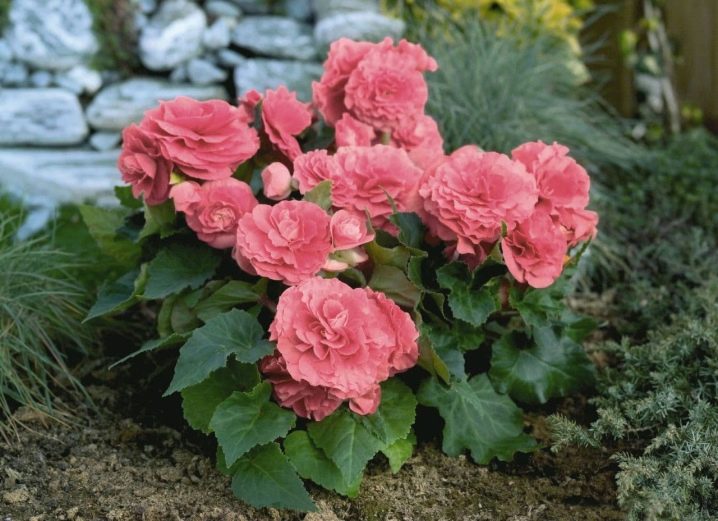
Ampelnaya
There are a number of interesting varieties of special ampel begonias.
"Bella"
So, one of the most popular is the Bella flower. This plant has a very graceful and colorful appearance. Its stalk is fleshy, the leaves are large. Due to these features, Bella flowers effectively decorate a variety of environments. It is impossible to ignore them.
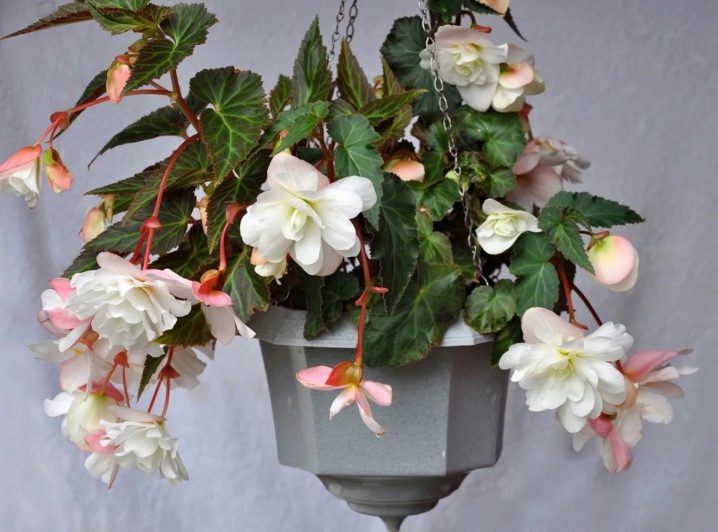
"Chanson"
A well-known representative of the ampelous begonia is a “pet” with the memorable name “Chanson”. These "green pets" differ in that they have rich and lush flowers of pink, red or white.
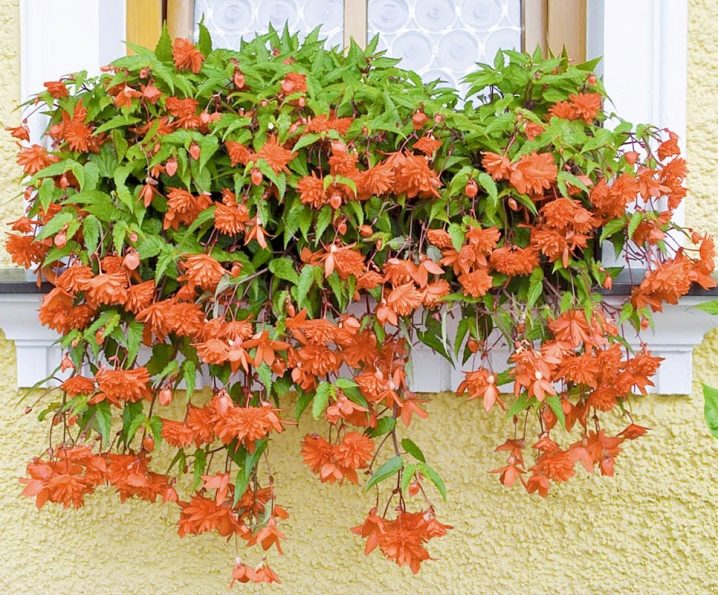
Cascade Pendula yellow
Cascade Pendula yellow is another bright representative of ampel flowers. It is distinguished by thick and rich shades. The foliage of the described plant is usually asymmetrical and also bright. Inflorescences most often grow flowing and very bright.

Illumination
Many growers are involved in the cultivation of the beautiful Illumination begonias. This flower is a perennial herb that grows up to 30 cm. Its leaf blades are herbaceous and heart-shaped. The flowers grow very large and double. The color of the latter is close to pink.
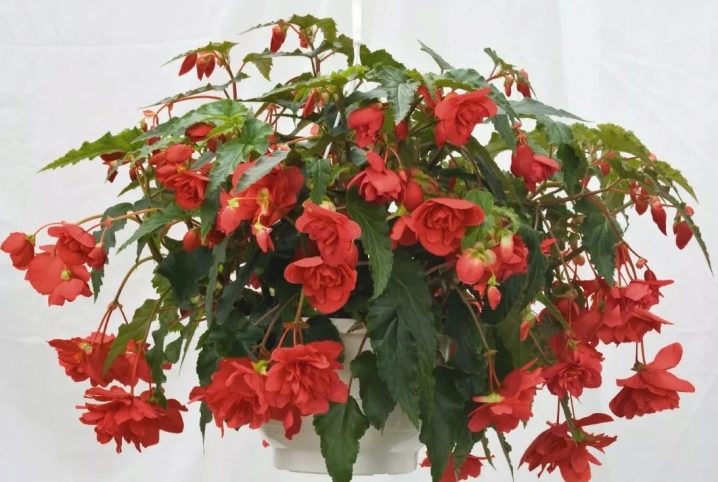
Cascade florence
There is another begonia Cascade Florence. It is a perennial small bush with a sturdy stem and pale green leaves. The flowers grow voluminous and large, have a pink color. They usually grow on falling branches.

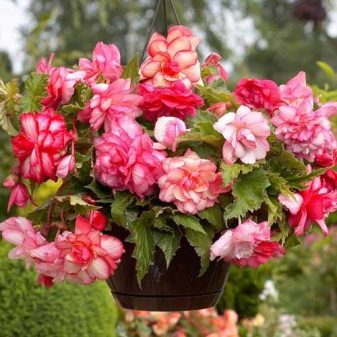
Bolivian
The shoots of the Bolivian flower "stretch" upward. Reaching the desired level, the shoots begin to tilt gradually, thus forming a beautiful cascade of flowers.
Such begonia is further subdivided into a number of separate varieties. Popular and frequent ones are Copacabana, Bossa Nova, Santa Cruz Sunset.
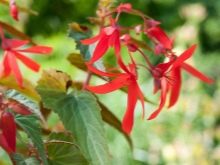

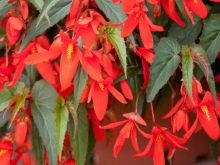
Gloire de lorraine
The hybrid variety Gloire de Lorraine deserves a special mention. It looks very nice. The bush of the specified begonia is voluminous, covered with small flowers of different colors. These plants look charming on the windowsill, but they also often complement the space in the hallway - here the choice remains only with the owners.
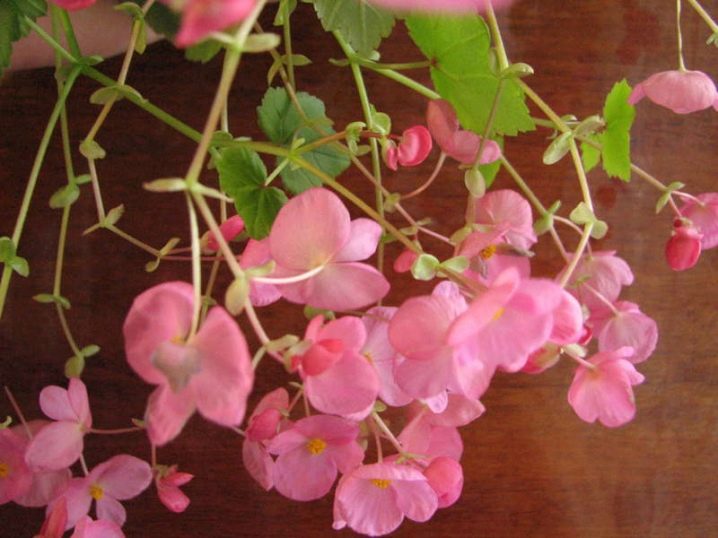
Camelliaceae
The camelliaceae group includes a flower of the "Camellia" variety. This is a perennial plant that can be about 35 cm in height. Its shoots are numerous, the flowers grow large and double. Their color is bright pink, there are snow-white stripes on the petals. "Camellia" is able to decorate even the inconspicuous corners of the room in which it is located. This plant blooms from July to the first frost. In care, this plant is not capricious and easily transfers the transplant to a new place.
The described flowers can be supplemented with a flower bed, flower garden, balcony containers or hanging pots.
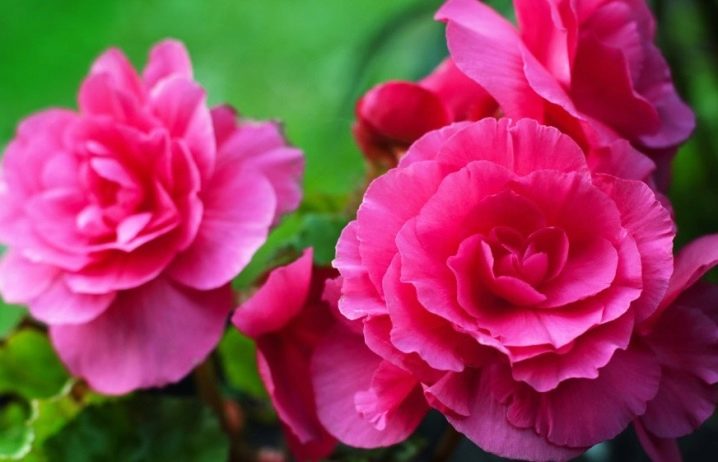
There are many more varieties of begonias, for example, the charming Chardonnay, Griffin, Krasnolistnaya, Caudeksnaya, Lucerne. It is possible to describe different variants of this plant for a very long time - each of them has its own distinctive features. Before buying a flower you like, it is important to find out exactly which variety it belongs to.
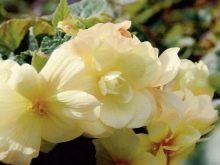
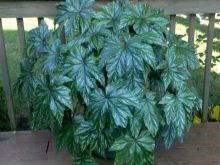

How to choose?
The plant you choose must be healthy and beautiful. The leaves and flowers should not have spots or other similar defects. In no case should there be parasites on the flower. The foliage should not fall off or be withered. Choose plants based on their height as they grow. For especially tall specimens, an appropriate place should be allocated where it will be convenient and comfortable for them.
You should not buy too difficult to care for and exotic varieties if you are a novice florist. Experienced craftsmen advise inexperienced people to buy the flower "Elatior" (or winter), "Non-Stop", "Bauer" - it is easiest to take care of them.
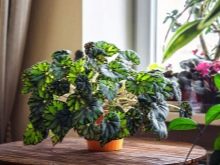
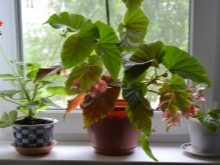
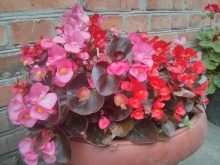
Home care
Consider what conditions are required to provide begonias, which grows in the house.
- All its varieties do not like too hot weather. A temperate climate is more suitable for begonias. The temperature should be 23-25 degrees in summer and at least 15 degrees in winter.
- If the flowers cannot stand outside, the diffused light effect can be provided with tulle curtains or blinds.
- It is advisable to place decorative leafy views near the east or west windows.
- Air humidity should be no more and no less than 60%. Often, open containers with water are placed next to the pots or they use air humidifiers.
- Do not spray the foliage of flowers with water - it will dry out and die.
- Before flowering, the bush needs fertilizing with complex fertilizers. It is advisable to use water-soluble formulations for indoor plants without chlorine.
- After watering (after a couple of days), you need to loosen the soil so that the root system does not suffer. To do this, you can use a sharpened stick.
Tips for growing begonias - in the video.































The comment was sent successfully.